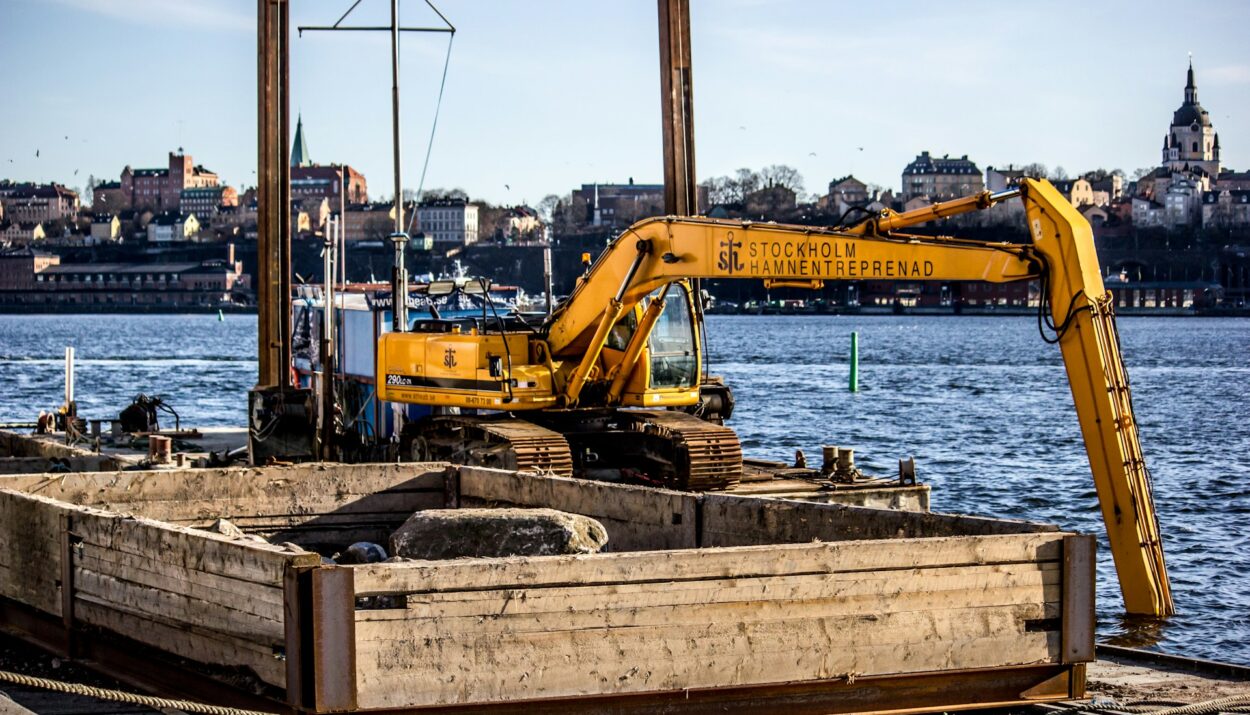Underwater construction technology is evolving at a remarkable pace, setting the stage for unprecedented developments in marine engineering. With each passing year, new innovations are unveiled, enhancing our ability to build and maintain structures beneath the water’s surface.
With advancements like bank stabilization and submersible robotics, this field is becoming more crucial than ever. This blog post explores the top innovations in underwater construction technology, offering insights into how these advancements can reshape the landscape of.
This blog post will explore the top innovations in underwater construction technology, providing detailed insights into how these advancements are reshaping the landscape of marine engineering.
From enhanced safety protocols to cost-effective solutions, the current trajectory of underwater construction promises a future where marine engineering is not only more accessible but also more innovative and impactful than we could have imagined.
Introduction to Underwater Construction Technology
Underwater construction technology has long been vital for creating and maintaining structures below water surfaces. From ports to bridges, the need for robust and efficient construction solutions is paramount. Recent innovations have revolutionized this field, enabling more complex and daring projects than previously imagined.
This blog aims to highlight these cutting-edge advancements, providing an overview of how they enhance efficiency and safety in underwater construction. For professionals and enthusiasts alike, understanding these trends is essential for staying ahead in a competitive industry.
The Need for Bank Stabilization
Understanding Bank Stabilization
Bank stabilization refers to the techniques used to prevent erosion and protect shorelines. This process is vital for maintaining the integrity of waterfront structures and ecosystems. With increasing environmental concerns, effective bank stabilization solutions have never been more critical.
Techniques and Materials
Modern bank stabilization involves a variety of methods and materials tailored to specific site conditions. Geotextiles, ripraps, and gabions are commonly used to reinforce banks, while natural solutions like vegetation are gaining popularity. These methods work together to create sustainable and lasting protection against erosion.
Innovations in Bank Stabilization
Recent innovations in bank stabilization focus on integrating natural and engineered solutions. By combining traditional methods with modern technology, engineers can achieve more effective results. For instance, the use of biodegradable materials and living shorelines offers eco-friendly alternatives that align with environmental goals.
Exploring Underwater Technology
The Role of Underwater Technology
Underwater technology encompasses the tools and techniques used in submerged environments. It plays a crucial role in various fields, including construction, research, and exploration. Technological advancements have expanded the possibilities for underwater projects, making them more accessible and efficient.
Key Technologies in Use
Several key technologies are used in underwater construction. Sonar mapping, underwater cameras, and remotely operated vehicles (ROVs) provide valuable data and imagery, enhancing precision and safety. Additionally, advanced sensors and monitoring systems allow for real-time analysis of underwater conditions.
The Future of Underwater Technology
The future of underwater technology looks promising, with continuous developments on the horizon. Innovations like autonomous underwater vehicles (AUVs) and enhanced communication systems will further streamline operations. These advancements will reduce costs, increase efficiency, and open new opportunities in underwater construction.
Construction Advancements Beneath the Waves
Achieving Construction Advancements
Construction advancements in underwater technology have transformed the industry, enabling more complex projects. These innovations enhance efficiency, reduce risks, and improve project outcomes. Engineers can now tackle challenges that once seemed insurmountable, thanks to cutting-edge tools and techniques.
Notable Techniques and Equipment
New techniques and equipment have emerged as game-changers in underwater construction. Prefabrication, modular construction, and advanced welding technologies offer practical solutions for building and maintaining structures below water. These methods reduce on-site labor, minimize environmental impact, and ensure higher-quality results.
The Impact on Infrastructure Projects
The impact of these advancements on infrastructure projects is significant. From bridges and tunnels to offshore platforms, the ability to construct and maintain structures underwater has broadened the scope of possibilities. This progress allows for safer, more efficient, and more sustainable infrastructure development worldwide.
Marine Engineering’s Role in Innovation
Defining Marine Engineering
Marine engineering involves the design, construction, and maintenance of structures and systems in marine environments. It plays a crucial role in supporting transportation, energy production, and environmental protection. The discipline’s importance continues to grow as the demand for sustainable and innovative solutions increases.
The Intersection of Engineering and Technology
The intersection of engineering and technology drives innovation in marine engineering. Engineers leverage advanced tools, techniques, and materials to develop efficient and sustainable solutions. This synergy enables the creation of more resilient structures and systems, meeting the challenges of harsh marine environments.
Promoting Sustainable Practices
Sustainability is a core focus in modern marine engineering. Engineers strive to minimize environmental impact while maintaining high performance and safety standards. Green construction practices, eco-friendly materials, and energy-efficient technologies are increasingly integrated into projects, reflecting a commitment to responsible engineering.
Submersible Robotics Transforming the Industry
The Rise of Submersible Robotics
Robotics has revolutionized underwater construction and exploration. These robotic systems perform tasks in challenging environments, reducing risks to human divers and increasing efficiency. They represent a significant leap forward in the capability and versatility of underwater operations.
Applications and Benefits
Robots have diverse applications in underwater construction, inspection, and maintenance. They can access hard-to-reach areas, perform precise tasks, and operate in extreme conditions. The benefits include enhanced safety, reduced costs, and improved project timelines, making them invaluable tools in the industry.
The Future of Robotic Solutions
The future of robotic solutions in underwater construction is full of potential. Continued advancements in AI, automation, and materials science will further enhance their capabilities. These developments will enable even more complex and ambitious underwater projects, pushing the boundaries of what’s possible beneath the waves.
Trends Shaping Innovation
Identifying Innovation Trends
Trends in underwater construction technology are driven by a combination of technological advancements and industry demands. These trends shape the future of marine engineering, offering new opportunities and challenges. Staying informed about these trends is essential for professionals looking to remain competitive.
Key Drivers of Change
Several key drivers influence innovation trends in underwater construction. Increased focus on sustainability, demand for efficient project delivery, and the need for enhanced safety all contribute to shaping the industry’s direction. These factors encourage the development and adoption of new technologies and practices.
Preparing for the Future
Preparing for the future of underwater construction requires awareness and adaptability. Professionals must stay informed about emerging trends and technologies, invest in continuous learning, and collaborate with industry peers. This proactive approach will ensure they are well-equipped to tackle future challenges and seize opportunities.
Conclusion and Call to Action
The advancements in underwater construction technology are transforming the industry, offering new possibilities and improving project outcomes.
From bank stabilization to submersible robotics, these innovations enhance efficiency, safety, and sustainability. For business professionals and engineers, staying informed about these trends is crucial for success in a rapidly evolving field.
For those interested in exploring further, consider partnering with leading industry experts or attending specialized conferences to stay updated. By doing so, you can harness the potential of these cutting-edge technologies and drive your projects to new heights.






